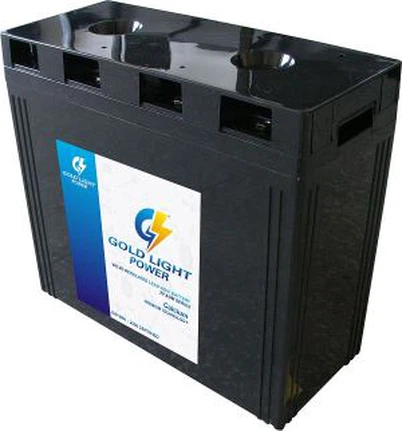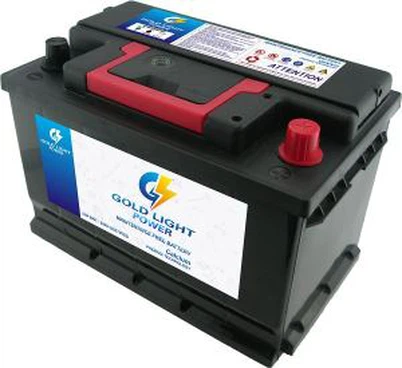How does the internal resistance affect a Gel Battery?
Leave a message
Hey there! As a supplier of Gel Batteries, I've seen firsthand how internal resistance can have a huge impact on these powerhouses. In this blog, I'm gonna break down what internal resistance is, how it affects Gel Batteries, and why it matters to you.
First off, let's talk about what internal resistance actually is. Every battery, including Gel Batteries, has some amount of resistance within it. This resistance is caused by a few different things, like the materials used in the battery, the design of the electrodes, and the electrolyte solution. When current flows through the battery, this internal resistance causes a voltage drop, which means that the voltage you measure at the battery terminals is actually lower than the theoretical voltage of the battery.
So, how does this internal resistance affect a Gel Battery? Well, there are a few key ways.
1. Charge and Discharge Efficiency
One of the most significant impacts of internal resistance is on the charge and discharge efficiency of the battery. When you're charging a Gel Battery, the internal resistance causes some of the electrical energy to be converted into heat instead of being stored in the battery. This means that you have to put in more energy than you actually get out in the end. The higher the internal resistance, the more energy is wasted as heat, and the less efficient the charging process becomes.
On the discharge side, the internal resistance also plays a role. As the battery discharges, the voltage drop across the internal resistance means that the battery can't deliver as much power as it could if there was no resistance. This can lead to a shorter runtime for devices that are powered by the battery. For example, if you have a 12V device that needs a certain amount of current to operate, a Gel Battery with high internal resistance might not be able to supply that current at the required voltage, causing the device to malfunction or not work at all.
2. Battery Lifespan
Internal resistance can also have a big impact on the lifespan of a Gel Battery. When a battery has high internal resistance, it generates more heat during charging and discharging. This heat can cause the battery to age more quickly, as it can damage the internal components of the battery, such as the electrodes and the electrolyte. Over time, this can lead to a decrease in the battery's capacity and performance, and eventually, the battery may no longer be able to hold a charge at all.
In addition, the increased heat can also cause the battery to lose water more quickly, which can lead to dry-out and further damage to the battery. This is especially a concern for Gel Batteries, as they rely on a gel electrolyte to function properly. If the gel dries out, it can cause the battery to fail.
3. Performance at Different Temperatures
The internal resistance of a Gel Battery can also vary depending on the temperature. Generally, as the temperature decreases, the internal resistance of the battery increases. This means that at low temperatures, the battery may not be able to deliver as much power as it can at higher temperatures. For example, if you're using a Gel Battery in a cold climate, you might notice that the battery doesn't last as long or perform as well as it does in warmer conditions.
Conversely, at high temperatures, the internal resistance can decrease, but this can also lead to other problems. The increased temperature can cause the battery to overheat, which can damage the internal components and reduce the battery's lifespan.
How to Minimize the Impact of Internal Resistance
As a Gel Battery supplier, I know that minimizing the impact of internal resistance is crucial for ensuring the performance and longevity of our batteries. Here are a few things we do to keep internal resistance in check:
- Use high - quality materials: We use high - quality electrodes and electrolytes in our Gel Batteries. These materials have lower resistance, which helps to reduce the overall internal resistance of the battery.
- Optimize the battery design: Our engineers work hard to design the batteries in a way that minimizes the resistance. This includes things like the shape and size of the electrodes, the spacing between them, and the way the electrolyte is distributed.
- Proper charging and discharging: We provide clear instructions on how to charge and discharge our Gel Batteries. Overcharging and deep discharging can increase the internal resistance of the battery, so it's important to follow the recommended charging and discharging procedures.
Our Gel Battery Products
We offer a range of Gel Battery products that are designed to have low internal resistance and high performance. For example, our 12V38AH Solar GEL Battery Standard Storage Battery Products are perfect for solar energy storage systems. They have a low internal resistance, which means they can charge and discharge efficiently, and they can provide a stable power supply for a long time.
Another great product is our 12V24AH Solar Battery Sealed GEL Battery Standard Vrla Products. These batteries are sealed, which helps to protect the internal components and maintain a low internal resistance. They're also suitable for a variety of applications, from small solar power systems to backup power for home appliances.
Why Internal Resistance Matters to You
If you're in the market for a Gel Battery, understanding internal resistance is important. A battery with low internal resistance will be more efficient, last longer, and perform better in a variety of conditions. Whether you're using the battery for a solar power system, a backup power supply, or in an electric vehicle, a low - resistance Gel Battery will give you better value for your money.
So, if you're interested in our Gel Battery products and want to learn more about how they can meet your needs, don't hesitate to reach out. We're here to help you find the right battery for your application and answer any questions you might have. Contact us today to start a procurement discussion and see how our Gel Batteries can power your world!


References
- Linden, D., & Reddy, T. B. (2002). Handbook of Batteries. McGraw - Hill.
- Gregory, D. P. (2011). Battery Management Systems: Design by Example. Wiley.





